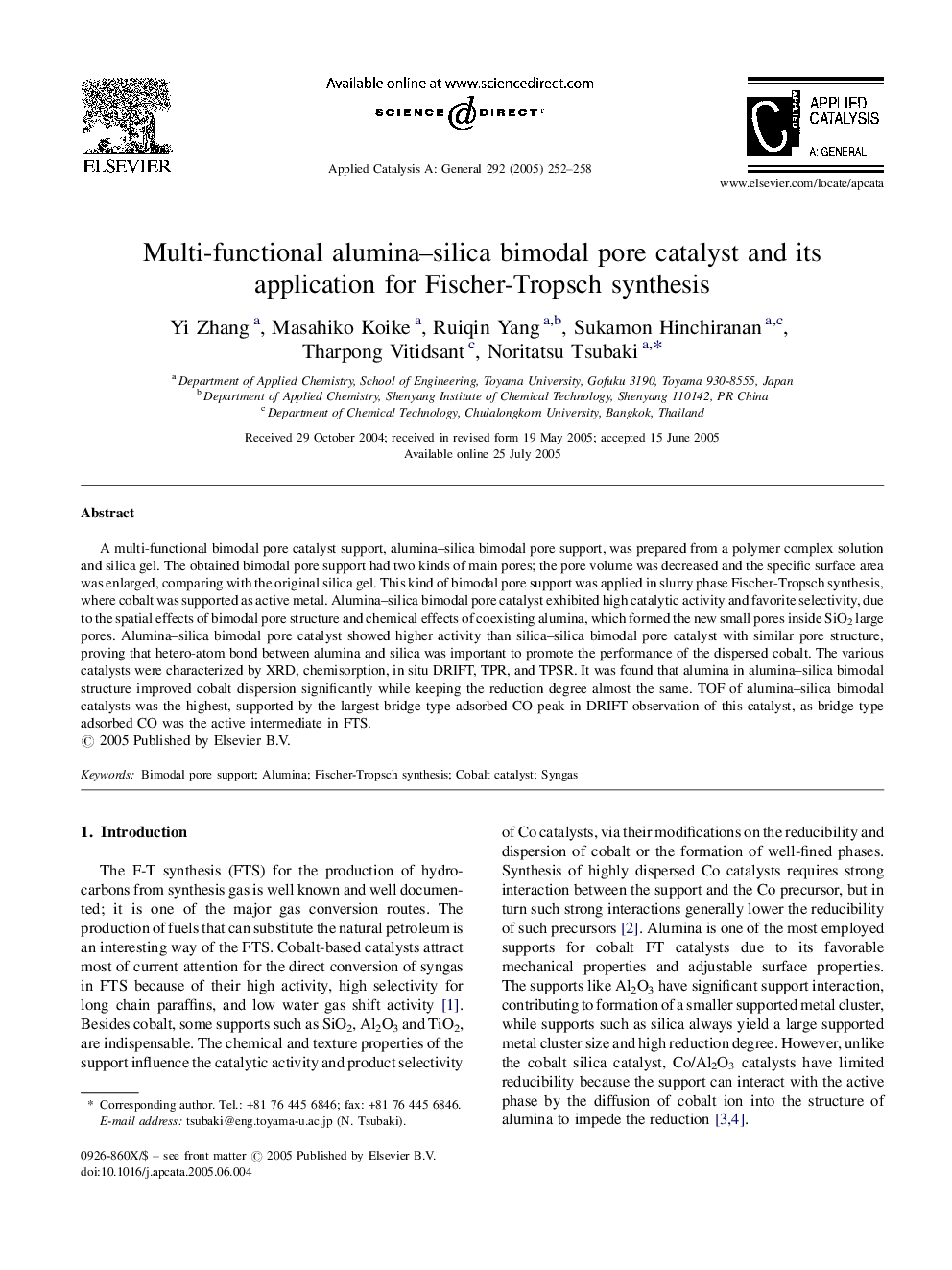| Article ID | Journal | Published Year | Pages | File Type |
|---|---|---|---|---|
| 9607832 | Applied Catalysis A: General | 2005 | 7 Pages |
Abstract
A multi-functional bimodal pore catalyst support, alumina-silica bimodal pore support, was prepared from a polymer complex solution and silica gel. The obtained bimodal pore support had two kinds of main pores; the pore volume was decreased and the specific surface area was enlarged, comparing with the original silica gel. This kind of bimodal pore support was applied in slurry phase Fischer-Tropsch synthesis, where cobalt was supported as active metal. Alumina-silica bimodal pore catalyst exhibited high catalytic activity and favorite selectivity, due to the spatial effects of bimodal pore structure and chemical effects of coexisting alumina, which formed the new small pores inside SiO2 large pores. Alumina-silica bimodal pore catalyst showed higher activity than silica-silica bimodal pore catalyst with similar pore structure, proving that hetero-atom bond between alumina and silica was important to promote the performance of the dispersed cobalt. The various catalysts were characterized by XRD, chemisorption, in situ DRIFT, TPR, and TPSR. It was found that alumina in alumina-silica bimodal structure improved cobalt dispersion significantly while keeping the reduction degree almost the same. TOF of alumina-silica bimodal catalysts was the highest, supported by the largest bridge-type adsorbed CO peak in DRIFT observation of this catalyst, as bridge-type adsorbed CO was the active intermediate in FTS.
Related Topics
Physical Sciences and Engineering
Chemical Engineering
Catalysis
Authors
Yi Zhang, Masahiko Koike, Ruiqin Yang, Sukamon Hinchiranan, Tharpong Vitidsant, Noritatsu Tsubaki,
